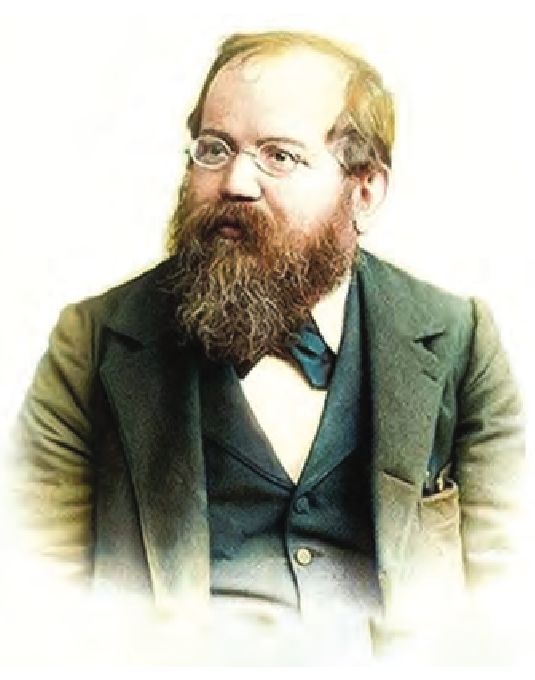 If someone defeats a world champion brilliantly, even in a casual game, it’s worthy of note. Thus I included in Memorable Games of British Chess the off-hand game which Bird won against Lasker in 1892 (Game 14), and the 1908 game (Game 19) in which one Donald Murray beat Lasker with one of the earliest examples of the Dragon exchange sacrifice. And if it were genuine, this little game, supposedly Grimshaw-Steinitz, described by Wellmuth in The Golden Treasury of Chess (Horowitz & Harkness, 1943) as “the most summary demolishment(sic) of Steinitz on record” would perhaps deserve to join them. But is it genuine? Andy Soltis, in David vs Goliath Chess (Batsford, 2016) was confident that it was, as was Grimshaw’s obituarist in the British Chess Magazine.
If someone defeats a world champion brilliantly, even in a casual game, it’s worthy of note. Thus I included in Memorable Games of British Chess the off-hand game which Bird won against Lasker in 1892 (Game 14), and the 1908 game (Game 19) in which one Donald Murray beat Lasker with one of the earliest examples of the Dragon exchange sacrifice. And if it were genuine, this little game, supposedly Grimshaw-Steinitz, described by Wellmuth in The Golden Treasury of Chess (Horowitz & Harkness, 1943) as “the most summary demolishment(sic) of Steinitz on record” would perhaps deserve to join them. But is it genuine? Andy Soltis, in David vs Goliath Chess (Batsford, 2016) was confident that it was, as was Grimshaw’s obituarist in the British Chess Magazine.
Tim Harding, in his magnificent Steinitz in London (McFarland, 2020), dismisses the game as spurious. And for reasons I shall seek to explain, I am quite sure that Harding is right, though I’m not convinced by his blaming Grimshaw himself for its appearance.
So who was Grimshaw, and why is he remembered? Walter Grimshaw (1832-1890) was a composer of chess problems, and introduced the idea of the ‘Grimshaw theme’, in which two defending pieces with different ways of moving mutually interfere with one another. This problem, published in the Illustrated London News of 24th August 1850, shows an early example.
1 Bc8! Bxc8 2 Qf6 Re6. The reciprocal interference by 2...Be6 by which the bishop obstructs the rook’s defence of e5, results in immediate mate, of course: 3 Qe5#. However, now the rook obstructs the bishop’s defence of f5, allowing: 3 Qd4+ Kxd4 4 Nf5+ Kd5 5 c4# 1-0.
That was fairly crude; by 1930 Lev Loshinsky (Tijdschrift vs NSB 1930) was managing to get three Grimshaws into a single, wonderfully economical, problem.
The key is the waiting move 1 Bb3!. Now, almost any move by Black runs into a Grimshaw interference: on b7, with 1...Rb7 2 Rc6# or 1...Bb7 2 Re7#; on g7, with 1...Rg7 2 Qe5 or 1...Bg7 2 Qxf7#; or, a bishop and pawn Grimshaw rather than bishop and rook, on f6, with 1...f6 2 Qe4# or 1...Bf6 2 Qg4#.
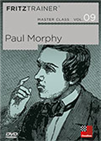 Learn about one of the greatest geniuses in the history of chess! Paul Morphy's career (1837-1884) lasted only a few years and yet he managed to defeat the best chess players of his time.
Learn about one of the greatest geniuses in the history of chess! Paul Morphy's career (1837-1884) lasted only a few years and yet he managed to defeat the best chess players of his time.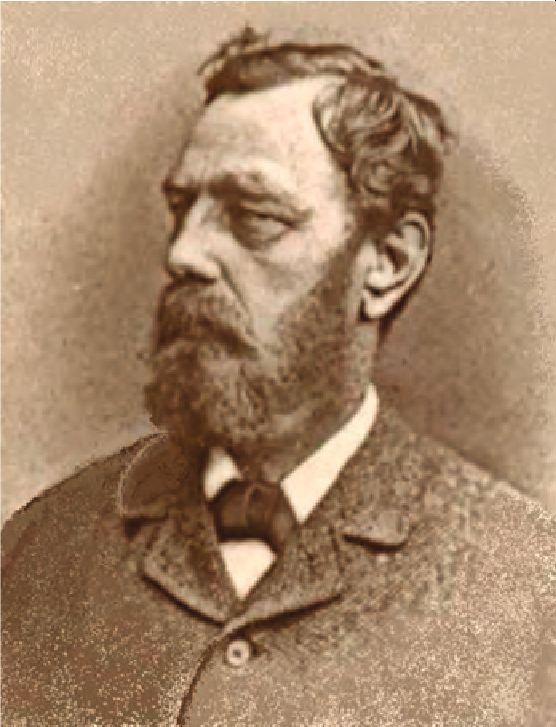 Grimshaw’s obituary in the British Chess Magazine, after he tragically took his own life in 1890, suggested that he was not far off master strength as a player, and it is not in dispute that he played one casual game against Wilhelm Steinitz at Simpson’s Divan, and won. But was that game the 17-move “summary demolishment”?
Grimshaw’s obituary in the British Chess Magazine, after he tragically took his own life in 1890, suggested that he was not far off master strength as a player, and it is not in dispute that he played one casual game against Wilhelm Steinitz at Simpson’s Divan, and won. But was that game the 17-move “summary demolishment”?
British Chess Magazine describes it as “fully authenticated”, it would seem on the basis of a claim made by the Reverend MacDonnell (the loser of Game 6 in Memorable Games) that Grimshaw, who was a complete stranger to him, tapped him on the shoulder and invited him to come and see “how I have got the great man”. Steinitz, who expressed himself furiously and at considerable length on the subject in the pages of the International Chess Magazine, suggested that it was absurd that a complete stranger should single out MacDonnell, and also pointed out that on another occasion MacDonnell claimed to have seen the game played.
Steinitz acknowledged that he had lost a game to Grimshaw, and added “I am not ashamed to own that I have lost games against much weaker players than Mr Grimshaw, nor should I be ashamed of losing in fifteen moves (sic), for shorter games of mine have been published where I left a piece en prise or overlooked a mate on the move [Indeed, one very short game which Steinitz lost appears at the end of this piece]. But I cannot let an attempt at imposition and fraud on the public pass unnoticed if I am sure of it [...] Nor have I any doubt that the game as published is a deliberately bogus manufactured forgery.”
Why was Steinitz so certain? Well, a few weeks after the actual game Grimshaw-Steinitz was played, Grimshaw wrote to Steinitz enclosing a few moves of the game with a request that Steinitz add the rest, which Grimshaw had forgotten, saying that he wished to keep the game “merely for the joke”. Now, suppose you had flattened the world champion in 19 moves, and suppose also that the first few moves were known ‘book’ and the last few a forced mating sequence including a queen sacrifice. Would you have forgotten the game?
The request from Grimshaw makes complete sense, however, if, as Steinitz consistently claimed, he had been invited to play a casual game for the then customary shilling stake and, after a few moves, “began to think I had caught a tartar, for my opponent played awfully slow and seemed determine to play a match game for one shilling [...] I had a dead won game for a long time, but at last, losing patience, I made a slip, and, as far as I remember, my opponent then played fairly well and won at last in good style a game which I believe extended to over 50 moves.”
Grimshaw had then showed Steinitz a fine two-move problem, over which he pondered for some fifteen minutes. “The stranger then lifted the veil of his incognito and divulged himself as the composer of the problem, and as Mr Grimshaw. He also made some apology for not having introduced himself before on the ground that he only wanted to play me without my knowing him, ‘as a joke’”. I note in passing that McDonnell’s claim to have been invited to see how Grimshaw “had got the great man” would make more sense if Steinitz was puzzling over a problem composed by Grimshaw, rather than lengthily contemplating a position in which he had been mated.
Steinitz dated his encounter with Grimshaw to about 1875. The game first appeared in the Illustrated London News of 23rd October 1880, stated to be between Grimshaw and “a Divan player” (with Steinitz not named as the player of the black pieces). Steinitz doesn’t appear to have been named as the loser until the game was republished in the Irish Sportsman in 1884.
Many of his contemporaries respected Steinitz, and the tribute Lasker paid to him after defeating him to win the world championship was touching. He had many strong and lasting friendships among the chess-playing community. But he had a gift for the cutting phrase. Of the Reverend MacDonnell, he remarked: “He evidently has an extraordinary good memory, for he always makes the same mistakes”. However, although Steinitz could be undiplomatic to a fault, he appears to have been fiercely honest about acknowledging his defeats. Thus this little game, no.486 in Harding’s book, in which Steinitz was beaten in fine style by the lawyer Edwyn Anthony (1843-1932):
The game was initially published from move 11 onwards, with Black not named; Steinitz in his own magazine admitted that he was the loser and gave the full score. He added that he had asked Anthony to publish the game giving his name.
And MacDonnell, writing about Steinitz in 1894, acknowledged “To himself, to his Walter Grimshaw was a pawnbroker in Whitby, as well as a noted early composer. October 2024 opponent, to chess, he is ever faithful [...] chess is to him a temple wherein he worships with the keenest ardour and most profound reverence”. Henry Bird also acknowledged Steinitz’s skill, but pointedly distinguished between what he termed Business Chess (at which he acknowledged Steinitz to be pre-eminent), and Recreationary and Amusement Chess.
Writing on chessgames.com, Geoff Chandler has pointed out that the story of Steinitz being, in effect, ambushed by Grimshaw “needed a punchline”. And a game played by Bird himself offered just such a punchline. Bird-Roberts, Philadelphia 1876, involved a black defence which Steinitz himself played. A little analysis suggested a possible improvement for Black, met by an elegant refutation. And so, years after the alleged event, the “punchline” surfaced.
What makes this especially plausible, in my view, is what the notes to the game in the Illustrated London News carefully avoid drawing attention to. 9...a6 is suggested, but this had been blown out of the water four years previously in Bird-Roberts (even though Bird had failed to find the quickest win). I do not, however, see any basis for assuming that Grimshaw himself, as opposed to MacDonnell and Bird (two gentlemen who, as Harding recounts, were more than happy to wind Steinitz up), was involved in the concoction of the “punchline”.
The shortest loss by a world champion, by the way? In 1867 Steinitz played two short matches against the Scottish expert George Brunton Fraser (1831?-1905), the first of them at odds of pawn and move, winning 7½-1½, and the second, on level terms, winning 4-2, Fraser creditably securing a win and two draws. Game 6 of the odds match (Game 231 in Harding’s book) proceeded thus (remove Black’s f-pawn): 1.e4 e6 2.d4 Qe7 (a dubious defence, which Steinitz repeated in Game 7, eventually securing a draw) 3.Bd3 Nc6 4.Nf3 b6 5.0-0 Bb7 6.d5 Nd8 7.Bg5 Qf7??
8.Ne5! 1-0
 About the author
About the author
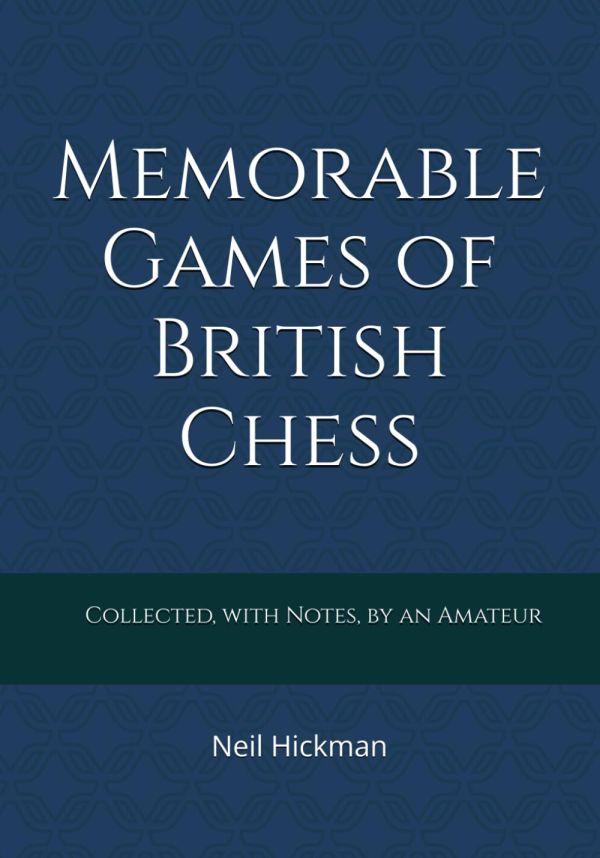 Neil Hickman is a retired county court judge who, after living in Bedford for over 40 years and playing for Bedford (and for Bedfordshire on occasions when they got desperate) now lives near Norwich and plays for Wymondham chess club.
Neil Hickman is a retired county court judge who, after living in Bedford for over 40 years and playing for Bedford (and for Bedfordshire on occasions when they got desperate) now lives near Norwich and plays for Wymondham chess club.
His book is available on Amazon or from the Chess & Bridge retail store in London.
In Chess Notes item 12047 Edward Winter wrote regarding the above article: "Much of it reads like an uncredited boiling-down of our feature article Grimshaw v Steinitz."

The above editorial is reproduced from Chess Magazine October/2024, with kind permission.
About CHESS Magazine
CHESS Magazine was established in 1935 by B.H. Wood who ran it for over fifty years. It is published each month by the London Chess Centre and is edited by IM Richard Palliser and Matt Read.
The Executive Editor is Malcolm Pein, who organises the London Chess Classic.
CHESS is mailed to subscribers in over 50 countries. You can subscribe from Europe and Asia at a specially discounted rate for first timers, or subscribe from North America.
Order your ChessBase products at special prices from CHESS Magazine here
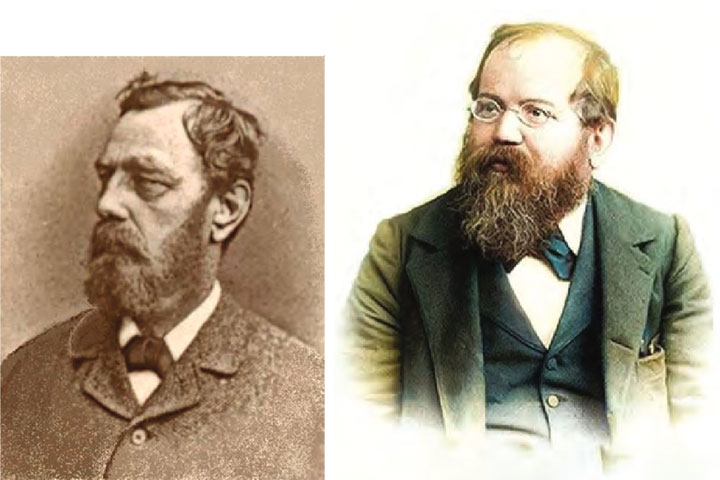

















 If someone defeats a world champion brilliantly, even in a casual game, it’s worthy of note. Thus I included in Memorable Games of British Chess the off-hand game which Bird won against Lasker in 1892 (Game 14), and the 1908 game (Game 19) in which one Donald Murray beat Lasker with one of the earliest examples of the Dragon exchange sacrifice. And if it were genuine, this little game, supposedly Grimshaw-Steinitz, described by Wellmuth in The Golden Treasury of Chess (Horowitz & Harkness, 1943) as “the most summary demolishment(sic) of Steinitz on record” would perhaps deserve to join them. But is it genuine? Andy Soltis, in David vs Goliath Chess (Batsford, 2016) was confident that it was, as was Grimshaw’s obituarist in the British Chess Magazine.
If someone defeats a world champion brilliantly, even in a casual game, it’s worthy of note. Thus I included in Memorable Games of British Chess the off-hand game which Bird won against Lasker in 1892 (Game 14), and the 1908 game (Game 19) in which one Donald Murray beat Lasker with one of the earliest examples of the Dragon exchange sacrifice. And if it were genuine, this little game, supposedly Grimshaw-Steinitz, described by Wellmuth in The Golden Treasury of Chess (Horowitz & Harkness, 1943) as “the most summary demolishment(sic) of Steinitz on record” would perhaps deserve to join them. But is it genuine? Andy Soltis, in David vs Goliath Chess (Batsford, 2016) was confident that it was, as was Grimshaw’s obituarist in the British Chess Magazine. Grimshaw’s obituary in the British Chess Magazine, after he tragically took his own life in 1890, suggested that he was not far off master strength as a player, and it is not in dispute that he played one casual game against Wilhelm Steinitz at Simpson’s Divan, and won. But was that game the 17-move “summary demolishment”?
Grimshaw’s obituary in the British Chess Magazine, after he tragically took his own life in 1890, suggested that he was not far off master strength as a player, and it is not in dispute that he played one casual game against Wilhelm Steinitz at Simpson’s Divan, and won. But was that game the 17-move “summary demolishment”?







